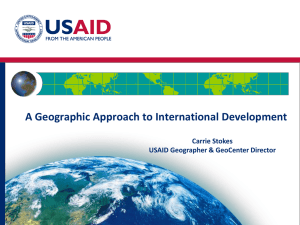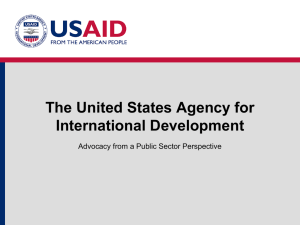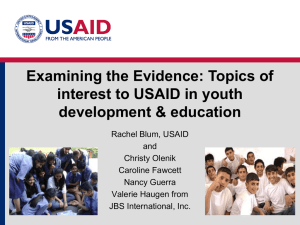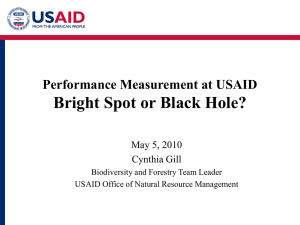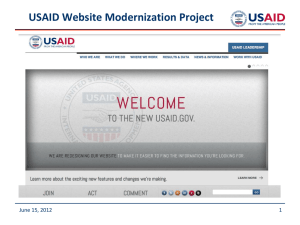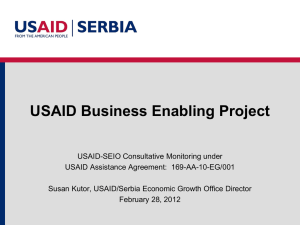The Problem - Children Deserve Families
advertisement
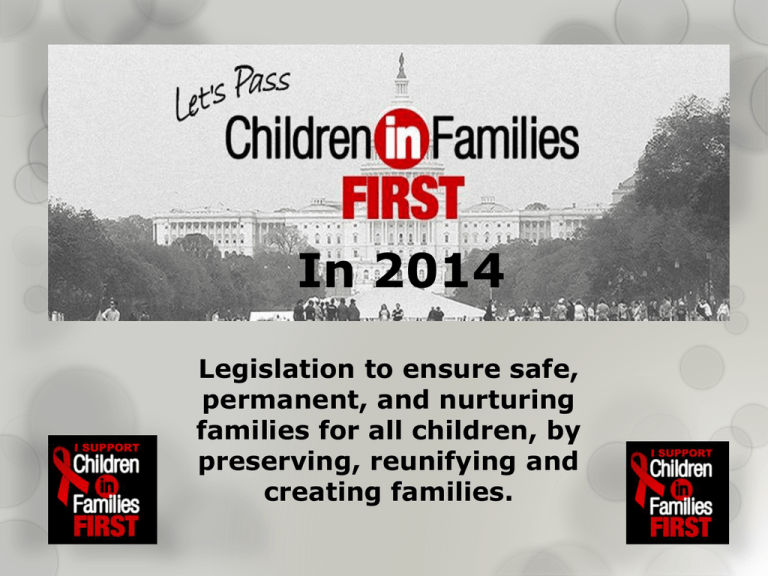
In 2014 Legislation to ensure safe, permanent, and nurturing families for all children, by preserving, reunifying and creating families. WHAT’S WRONG? Globally, the number of children without families increases every day. Children have a right to be loved, to grow up in a family, their biological family or another one, in their country, or somewhere else. Families, all over the world, are out there with open homes and open hearts, wanting to take them in. We are failing the children. SCIENCE PROVES THE DAMAGE Children without families experience toxic stress which often leads to permanent damage!! Scientific studies prove that children’s brains don’t develop properly without consistent parental care and connection. Children who cannot bond with a parental figure during the first years of life experience toxic stress which often leads to profound, permanent damage. SCIENCE PROVES THE DAMAGE A PICTURE OF THE NEUROLOGICAL IMPACT ON A CHILD’S BRAIN FROM INSTITUTIONALIZATION Reduced brain activity Reduced IQ Smaller brain Mental health problems • Inability to attach • Difficulty earning a living • • • • SOME RECOVERY POSSIBLE TIME IS OF THE ESSENCE THE SCOPE OF THE PROBLEM NO RELIABLE DATA AVAILABLE BECAUSE NO ONE COUNTS. No one knows how many children live without families: • • • • In institutions, On the streets, In refugee camps, As asylum seekers or stateless people… BUT INDICATORS SHOW NEED ON THE RISE Double Orphans Reported by UNICEF 18,000,000 16,000,000 14,000,000 12,000,000 10,000,000 8,000,000 6,000,000 4,000,000 2,000,000 0 1990 1995 2000 2005 2010 2013 Note: Double orphans counted here are children whose parents are both dead. BUT, these figures do not include children in institutions, street children, refugee or asylee or stateless children. MEANWHILE, ADOPTIONS TO U.S. FALLING YEAR AFTER YEAR 25,000 21,467 21,654 20,000 15,000 22,991 22,734 20,680 19,608 17,456 12,744 11,058 10,000 9,319 8,668 5,000 0 2002 2003 2004 2005 2006 2007 2008 2009 2010 2011 2012 This is a symptom of a much larger problem. International adoption isn’t THE answer. It’s one answer among many. But we are failing at using all of them and a generation of children is being destroyed… THE SEEDS OF CHANGE NATIONAL ACTION PLAN ON CHILDREN IN ADVERSITY Strong Beginnings Families First Freedom from violence, exploitation National Action Plan Objectives World Vision USG ACTION PLAN Child HHS CHILDREN 1,000 FOR IN ADVERSITY Fund Days HRSA PLAN Int AGRICULTURE FAS USAID CARE USAID DOS ASIA USAID FFP AF OHA USAID EGAT USAID USAID USAID NRM ME DCOF USAID HHS USAID OAPA HRSA USAID AFR PEACE PRH USAID Save CORP The GH/HIV LAC USAID Children USAID USAID DEFENSE E&E DHAPP USAID OFDA HIDN UNICEF Gen Dev Strong Beginnings DOS CI DHS USCIS DOS TIP Save The Children DOS IO DOS PRM HHS NIH DOS UNICEF DRL Child Protection World DEFENSE Vision OSD/PSO LABOR Amensty Int. HHS CDC ILAB Family First Freedom from violence, abuse, exploitation THE PROBLEM U.S. foreign policy implementation doesn’t further the core American value that children belong in families -- biological or adoptive. Families are the bedrock of any society, yet: • The number of children without families is rising. • The USG doesn’t focus sufficient resources on identifying children living without families and finding them families. • The USG doesn’t facilitate international adoption. It impedes it. CHILDREN IN FAMILIES FIRST (CHIFF) Addresses the problems by: 1.Supporting the implementation of the 2012 ACTION PLAN ON CHILDREN IN ADVERSITY: A Framework for International Assistance, with particular focus on objective two – Families First. 2.Realigning and expanding the roles the U.S. Government plays in international adoption, so that this tool of protection for children living without families can be revitalized. WHAT CHIFF DOES As street children As refugees As stateless people LACK OF DATA In orphanages or other institutions Weak Government Child Welfare Systems Millions of children living without families. Counting Family Preservation Registering Prioritizing Family Reunification Finding Solutions Domestic Adoption Where this legislation will help International Adoption HOW CHIFF DOES IT • NEW THINGS • New organization with expanded mandate within the Department of State focused on International Child Welfare. • New, interagency, annual reporting requirement on children without families. • New Center for Excellence on Children in Adversity and associated spending authority to jump-start implementation the National Action Plan, with special emphasis on objective two – Families First. HOW CHIFF DOES IT • CHANGED THINGS • Streamlines and realigns international adoption processing and procedures as follows: • DOS -- Diplomatic leadership, engagements, and programming, integrating the priority of permanence for children • USAID -- Child welfare development programming integrating the priority of permanence for children • USCIS -- All case processing in international adoptions up to the immigrant visa, streamlined and simplified procedures, accreditation of U.S. adoption service providers WHAT CHIFF ACHIEVES • U.S. leadership on our core value of families first • Improved child welfare systems around the world • Timely and better protection for children through • • • • Family preservation Family reunification Domestic and Kinship adoption International adoption • Fewer children in institutions or on the streets • Revitalized international adoptions to the U.S.

